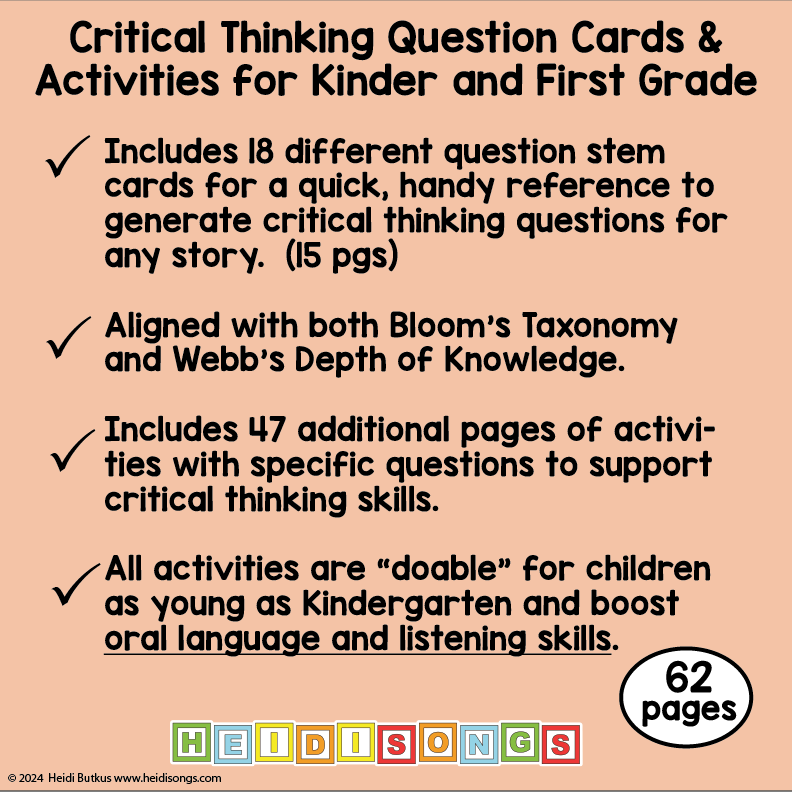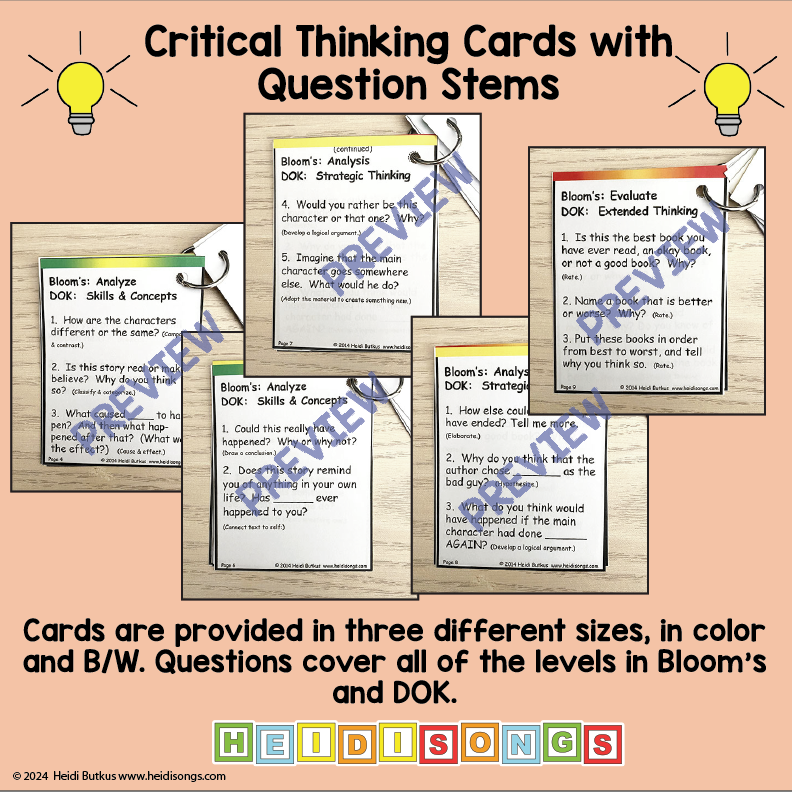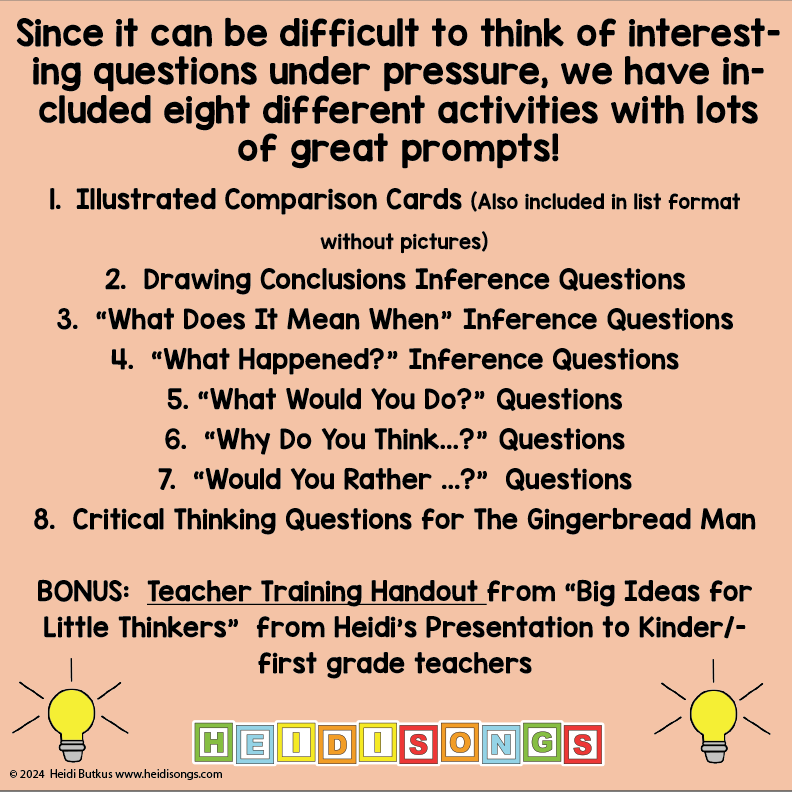





Need some help coming up with questions that align with Bloom's Taxonomy or Webb's Depth of Knowledge (DOK), from simple to complex? These cards will help you quickly come up with critical thinking questions that even pre-K, Kindergarten, and TK students can answer! In addition, there are eight other sets of question-based activities so that you will never run out of ways to get kids talking and thinking!

These question prompts are all fantastic for developing oral language, and many would also work as writing prompts for children who are ready for that!
The question stems range from the most simple to the most complex at the top of each "pyramid," but they are designed to be “do-able,” so even Kindergarteners and First Graders could answer them. They are also designed to be adaptable to just about any story!
The questions are aligned with both Bloom's Taxonomy and Webb's Depth of Knowledge, so no matter which of these two thought taxonomies you use, you should be able to use these cards. It also shows how the two systems intersect, overlap, and/or differ. Be sure to take a look at Heidi's Critical Thinking handout (included) for more information.
1. Critical Thinking Question Stem Cards in three sizes and in color or b/w. There are 18 question stem cards, not counting the cards with the pictures of the Bloom's and DOK thinking pyramids on them.
*The largest format cards are approximately 3.75 x 5 inches if trimmed closely. (6 pgs in color and 6 in B/W)
* The medium cards are 3.75 x 2.5, in B/W only. (2 pgs)
* The tiny cards are 2.3 x 1.75, in B/W only. (1 pg!)
2. Critical Thinking Illustrated Comparison Cards (B/W) (21 pgs)
This set has 40 illustrated questions on a half sheet each. This includes questions like "An elephant is like a hose because..." There is also a separate sheet with these questions on it without the illustrations. (2 pgs)
3. Drawing Conclusions Inference Questions (1 pg)
These questions are set up so that children only know part of the information and then must infer where they are and what is happening, etc.
4. "What Does It Mean When" Inference Questions (3 pgs)
This set has 53 idiomatic phrases for children to explain. For example, one phrase is, "Two heads are better than one." Children are expected to infer and explain that when people work as a team, they often get better results.
5. "What Happened?" Inference Questions (2 pgs)
In this activity, children listen to a very short story in which they try to infer what happened before.
6. "What Would You Do?" Questions (2 pgs)
In this activity, children listen to a short scenario and decide what they would do in that situation. This gives children a chance to practice developing a logical argument and explaining their thinking.
7. "Why Do You Think...?" Questions (3 pgs)
This set includes 35 questions that give children a chance to develop a logical argument. For example, one question is, "Why do you think that police officers and firefighters wear uniforms?"
8. "Would You Rather ...? Questions (3 pgs)
This fun game includes two different situations for children to choose from and create a logical argument. A typical question might be, "Would you rather be a tiger or a whale?"
9. Critical Thinking Questions for The Gingerbread Man (3 pgs)
This document includes questions for the traditional tale, The Gingerbread Man. Questions start at the very basic recall level and then progress through to the very highest taxonomies. The questions should work for most versions of this story and also may be applied to other multicultural versions of this internationally famous tale. You could potentially read every version available to you and never run out of questions!
BONUS: Critical Thinking Skills Handout from Heidi's Presentation (7 pgs) (Color)
We have included this handout because it has some valuable information that will help you if you want to know more- especially on how Bloom's Taxonomy and Webb's DOK (Depth of Knowledge) intersect and overlap, plus what the differences are.